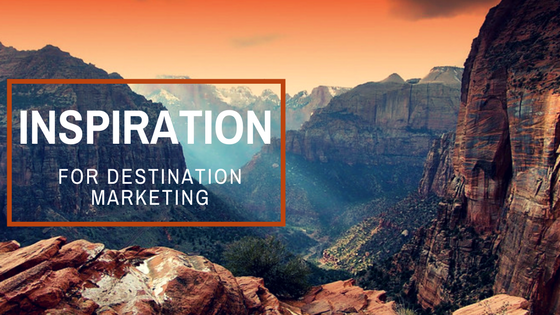Inspiration for Destination Marketing
In July, I attended Destinations International (formerly DMAI) in Montreal to expand my knowledge of destination marketing and to network with tourism professionals from around the world. The experience was more than I expected- I met fantastic people, learned new ideas and came away inspired to do more for our destination marketing organization clients. Here are four inspirational take-aways from the conference.

-
Discovering little known travel destinations
Atlas Obscura is an online resource started by two friends to help people experience a sense of wonder and curiosity. The site boasts 5 million users per month and includes a database of 11,000+ places. The online website and accompanying social media channels curate lesser-known locations throughout the world. The platform relies on submissions by their members. It’s easy to join and the editorial staff review each submission. Exploring this website reminds me of all the “off the beaten path” destinations that we have throughout New York State. I was excited to find Syracuse’s upside down traffic light included in the site’s “world turned upside down” list. Check out the website and then visit the FAQ’s section to find out how you can submit a location or make a pitch!
-
A new age travel movement
Nomadness Travel Tribe is a travel lifestyle brand that represents an under-represented demographic – African American US travelers. While under-represented in mainstream travel, this demographic spends $50 billion dollars annually on travel.
Since September 2011, the Tribe has gained 16,000 members. As a collective group they have over 100,000 passport stamps, have curated thirty international group trips, and launched a web series ‘The NOMADNESS Project’. The Tribe has also created the first conference in the US targeting diverse urban millennial travelers, and created an edgy travel apparel line. If the growth of this movement doesn’t inspire you, the photos from their trips and testimonials from their members will. Take some time to find inspiration by visiting their website.
-
Bold exchange of ideas
This is not your father’s business conference. Think SXSW with a twist. C2 is a conference held every year in Montreal that combines commerce and creativity to explore trends, opportunities, disruptions and major shifts on the horizon. The conference organizer wanted this event to be different – a business event for the future. They have pushed the limits in every aspect of the event. This conference brings new perspectives and inspires new ideas. They offer experimental brainstorming that takes place in the air, master classes, curated one on ones and hands-on workshops. Over 5,000 decision makers and creative minds come together each year to shape, experience and challenge the future of business. Be inspired – watch this recap video from the 2017 event and you might want to sign up for 2018!
-
Cathedral Thinking
One of the presenters during the conference referenced Cathedral Thinking – having a vision that has such far-reaching impact, that when you start to work toward the vision today, you do so knowing that you won’t be around to see it completed. The concept comes from medieval times, when stone workers would begin work on a new cathedral knowing that the project would not be finished in their lifetime. What a profound approach to our work in tourism!
Much of what we are doing today is setting in motion projects and ideas that will have far-reaching impact. This Ted Talk given by Rick Antonson from Visit Vancouver makes a great case for cathedral thinking and how it connects to travel. Ellsworth M Statler and Kemmons Wilson were two historical Cathedral Thinkers who helped shape the travel industry.
Ellsworth Statler was a hotel developer who coined the phrase “the customer is always right,”. He created the first hotel that catered to the middle class, opening the Statler Hotel in Buffalo, NY in 1907. This hotel set standards for comfort and convenience that changed the industry. In 1952, Kemmons Wilson created a new business model for roadside hotels. The hotels offered perks that many customers take for granted today – air-conditioned rooms, free parking, free ice and rates by the room and not by the person. That business model created the first Holiday Inn and changed the hospitality industry for generations.
Imagine what’s possible when you think beyond the boundaries of one life-time. What vision do you have for the future of the travel industry? What can you do today to set that vision in motion?
Author
Related Posts
Collaboration Drives Sustainable Tourism
Sustainable tourism has growing importance in the world of travel and tourism. As destinations grow in popularity, they need to collaborate closely with residents, local…
Marketing for Group Travel: Building Solid Relationships with Tour Operators
Group travel is a significant segment of the tourism market, and if you want to see those buses pulling up to the curb and filling…
